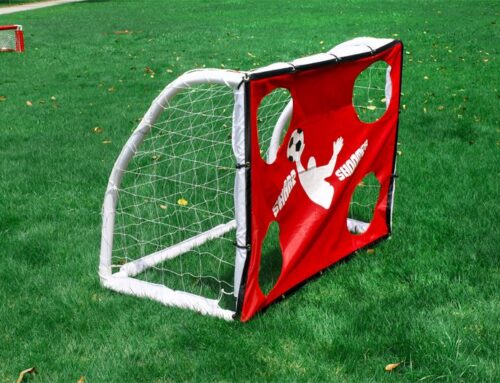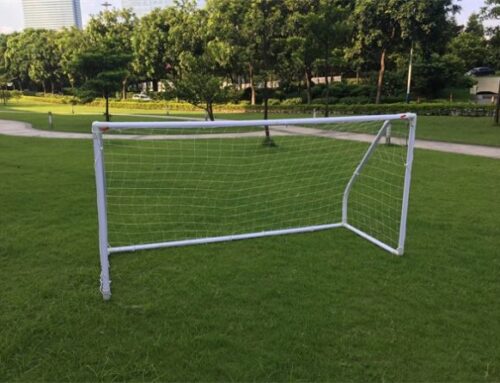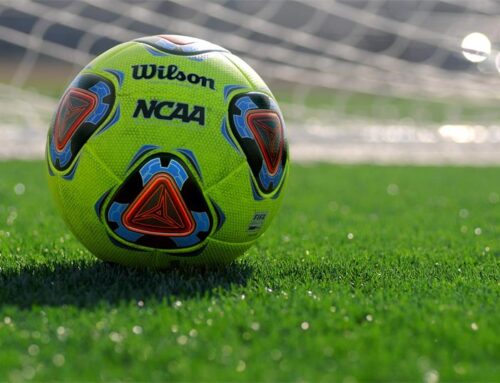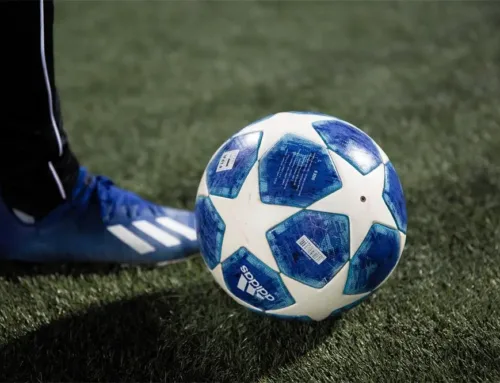Professional players excel in tight and confined spaces, especially, and they also have excellent footwork. They dedicate a lot of time to training, particularly footwork—not because of innate talent, but through consistent practice. Using well-structured training drills and techniques can help us improve our soccer footwork quickly. Join me, and let’s learn together!

Basic Soccer Training Drills
Juggling
Juggling is one of the most effective ways to become familiar with the ball. It’s often the first step in formal training, especially for children.
Short Pass
Short passes are made with the instep or the inside of the foot. In soccer, short passing is the most commonly used technique.
Long Pass
A long pass refers to passing the ball over a long distance. Long passes require precision and should have some height; a low trajectory can be easily intercepted by opponents.
Ball Control
Ball control refers to the ability to stop an incoming ball within your control range and transition into the next move. The importance of ball control cannot be overstated—it often dictates the pace of the game. Good ball control leads to better attacking opportunities. The method and body part used for control also play a role.
Thigh Control
Control the ball using the thigh by lifting it parallel to the ground. Thigh control usually requires more force than foot control, which makes it easier to transition into the next move.
Chest Control
Use your chest to cushion the ball when needed. While juggling, you can use your chest to push the ball slightly closer to your body. Once you gain chest control, you should smoothly transition to foot control whenever possible.
Physical Training Drills
Running is the main focus of physical training, with an emphasis on long-distance running. It’s recommended to run 20 laps of a 400-meter track, with each lap completed in no less than 2 minutes and 20 seconds.
Strength Training Drills
There are three types of strength training: upper body strength, core strength, and lower body strength (thighs and calves):
Upper Body Strength Training
- 8 push-ups per set, 5 sets
- 6 pull-ups per set, 5 sets
Core Strength Training
- Sit-ups with twists, 15–20 repetitions per set, 3 sets
Thigh Strength Training
- Walk in a “duck walk” position with thighs parallel to the ground, 30 meters per set, 5 sets without resting in between
Calf Strength Training
Calf raises, with minimal thigh involvement, 30 meters per set, 5 sets without resting in between
How to Implement a Soccer Training Drills Plan?
Ball control and technical exercises are best done in the morning.
6:00-6:20 Running,
6:25-7:00 Juggling practice
6:00-6:20 Running,
6:25-7:00 Accuracy practice (working on precision kicks)
6:00-6:30 Juggling,
6:30-7:00 Accuracy practice
6:00-6:20 Juggling,
6:25-7:00 Dribbling around cones practice
6:00-6:20 Dribbling with speed,
6:25-7:00 Juggling practice
You can schedule strength and physical training on the weekends according to your needs (preferably in the afternoon).
A strength training program can include dumbbells for the upper body, sit-ups for the core, and weighted sprints for the lower body.
Exercises for strengthening:
- Push-ups (20 repetitions)
- Overhead presses
- Lateral raises
- Dumbbell raises (20 repetitions per day)
Soccer Training Drills: Tips and Tricks
Juggling
Points to consider:
1. Avoid tilting your toes downward or upward. This will cause the ball to move forward or backward, making it harder to control.
2. Maintain a relaxed and coordinated body. Avoid excessive tension in your knees and keep your ankle joints stable to ensure better control and stability.
3. Keep moving while juggling. Don’t stand still—maintain balance by taking small steps and keep the ball under control.
Dribbling
Points to consider:
1. Dribbling with the outside of the foot: Lower your center of gravity and use the area between the little toe, fourth toe, and middle toe to touch the ball on its side and slightly behind. The ball should move forward in a diagonal direction toward your dribbling foot. Focus on controlling the force applied and the ball’s direction. Increase your touch frequency and speed, and be mindful of the position of your supporting foot.
2. Straight-line dribbling: Lower your center of gravity, tense the top of your foot, lift it slightly, and touch the ball behind you with the front part of your foot. Once you are comfortable with the movement, you can control the force and increase your speed. Aim for one touch per step.
3. Dribbling with the inside of the foot: Lower your center of gravity and use the area between your big toe and the arch of your foot to push the ball sideways and slightly behind. The ball should move diagonally forward toward the supporting foot. Gradually increase the frequency of touches and speed.
Ball Control
Ball control is the ability to stop an incoming ball within your control range and transition to your next move. A good stop can lead to excellent attacking opportunities, and the speed at which you control the ball often determines the pace of the game. It is crucial to choose the right method and area for control.
Points to consider:
1. Observation and movement: Before receiving the ball, observe its trajectory, rotation, and speed to quickly determine its landing spot. Position yourself in the optimal location for ball control.
2. Deciding where and how to control the ball: The purpose of ball control varies depending on the situation. Choose the appropriate area and method based on the on-field context and your next move.
3. Adjusting the force of the incoming ball: Depending on the ball’s speed and your control needs, you may need to apply extra force (a cushioning effect) to adjust the ball’s angle of reflection.
4. Moving with the ball: After controlling the ball, move with it seamlessly to transition into your next action. Avoid pausing between ball control and the subsequent movement.
Ball control is tied to the pass area. Use appropriate force to stop the ball gently, enabling you to execute your next technical move smoothly.
Shooting
Proper foot and ball positioning are crucial for effective shooting technique. Choosing the right shooting method at the right time significantly increases your chances of scoring. There are several types of shots, categorized by foot contact area:
1. Toe Poke: Often used by players who aren’t highly skilled in soccer, this method can still be effective in close-range situations, particularly in small-sided games like five-a-side. The ball travels fast and unpredictably, making it harder to intercept. However, toe pokes can lead to foot injuries, so it’s important to exercise caution.
2. Instep Shot: This is similar to passing with the instep but with greater power and precision.
3. Instep Drive: This powerful shot maximizes speed and power through precise foot placement. It’s similar to instep passing, but the positioning of the supporting leg and the body’s balance are adjusted. Maintaining the right angle between the swinging and supporting legs is essential. Anticipate the ball’s motion when taking a shot.
4. Inside (Outside) Curve Shot: Also known as a bending shot, this technique bends the ball’s trajectory. It allows you to bypass defenders, goalkeepers, or a defensive wall. This technique is straightforward but highly effective.
Soccer Training Drills Precautions
Cool Down After Training:
Engage in post-activity movements to aid in recovery. A five- to ten-minute cool-down exercise, such as light jogging and static stretching, will help gradually lower your heart rate and relax your muscles. This is key to preventing stiffness and promoting recovery.
Wear Proper Clothing and Footwear:
Since soccer involves a lot of running, technical movements, and sweating, it’s important to wear loose-fitting, breathable, and sweat-absorbent clothing. Choose soccer shoes with non-slip soles that fit well to ensure comfort and prevent injury.
Avoid Exercising on Uneven Surfaces:
Don’t exercise in areas that lack proper facilities. Injuries caused by uneven surfaces and debris (such as gravel on tracks or sand pits) can include ankle sprains, periosteal injuries, and Achilles tendon strains.
Warm Up Gradually:
Perform mild and low-intensity warm-up exercises before beginning any physical activity. As your heart rate and body temperature rise, gradually increase the intensity of your exercises. Proper warm-ups improve muscle efficiency and joint lubrication, helping prevent injuries.
Stay Hydrated:
Soccer requires a significant amount of physical exertion. Stay hydrated before, during, and after your training sessions. Drink small amounts of water regularly, rather than large quantities all at once. To enhance hydration, consider drinking lightly salted water.
Relaxation After Soccer Training Drills
After training, it’s recommended to jog for 400 meters followed by flexibility exercises. Take deep breaths to relax your mind and body. When competing, after your 400-meter jog, engage in passing and juggling exercises with a partner, followed by flexibility and stretching exercises along with deep breathing.
Additionally, a sauna or massage can aid in relaxation and recovery after physical activity, especially after a match.






Leave A Comment